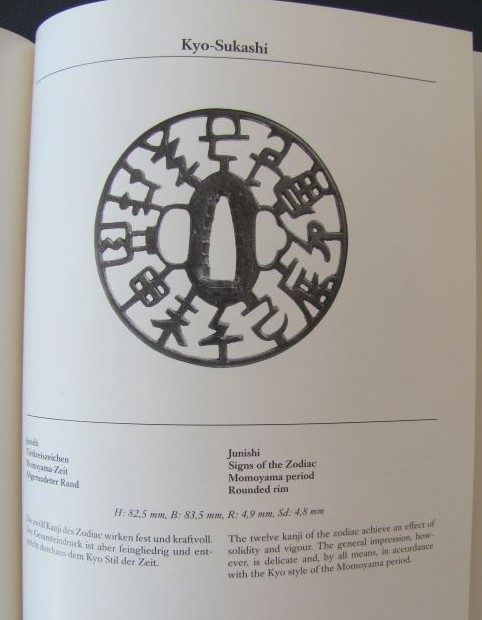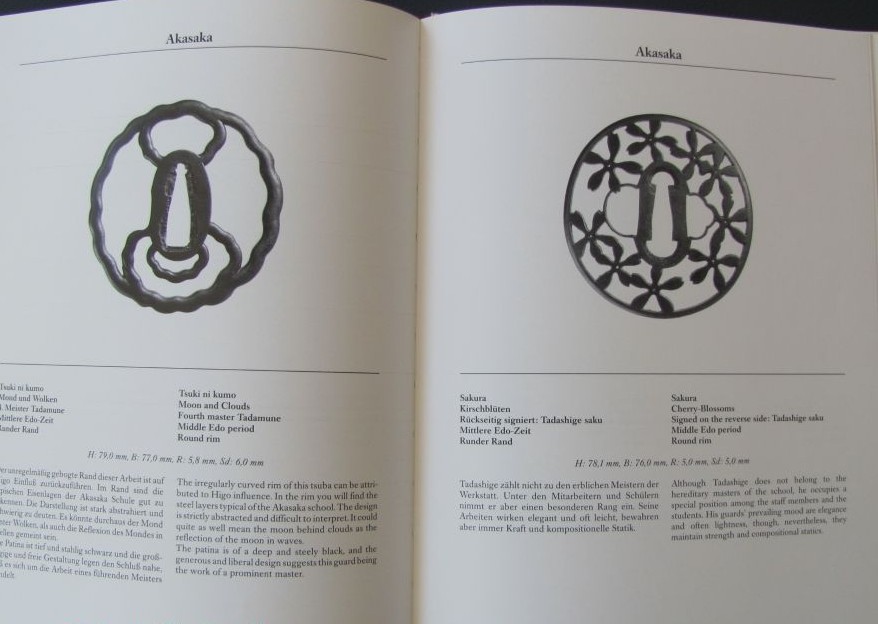As Mr. Kremers says in the preface to this book "The idea was born while preparing for the exhibition 'Sukashi Tsuba' within the symposium 'The Great Art of Small Objects' at the Museum fur Kunsthandwerk in Frankfurt on Main in 1990-1991.
Eckhard Kremers was born in Elz/Kreis Limburg Germany in 1949. He became a student of Sasano Masayuki Sensei in 1977 and continued his studies until the death of Mr. Sasano in 1993. This book was written with the blessings of Sasano Sensei and is a very fine tribute to him. One must also laud the photography and graphic design work of Joachim Efinger in this association. It is interesting to see that there are so many tsuba outside of Japan that are equal, and sometimes superior, to the examples we know so well that are illustrated in "EARLY JAPANESE SWORD GUARDS, Sukashi Tsuba" (1972), and "SUKASHI TSUBA" (1993), both by Sasano Masayuki, the latter which is available in an English translation that is titled "SASANO" (1994). It does the author credit that he has been able to show that the collections in the West have examples that are equal to those we see illustrated so often in the books printed in Japan.
Examples are illustrated from all the classic sukashi schools and date from ca. 1235 to 1870, a 600 year period. These dates are in line with the ideas put forward by Sasano Sensei, in his last book. This is the first book in the West to publish these ideas and dates that Sasano Sensei was bringing to fruition in the last years of his studies. Mr. Kremers very ably represents the vanguard of the ideas and thoughts of his teacher. The text for each section of the book consists of a page or two on the various schools and their history, except the Akasaka school which has four pages devoted to it. The text accompanying each illustration gives the design subject in Japanese with its German and English translation, the period and the type of rim shape. The full measurements in centimeters are below. Then there is a most interesting aesthetic analysis of the tsuba, based on its design, component parts, and relationship to the school and its style. Naturally this is the opinion of the author, but should be of great interest to the student who may be guided by principles that have been propounded during the last hundred and fifty years by Akiyama, Torigoye, Sasano, and now by Mr. Kremers. Each student should learn this style of critical observation of the tsuba in their collection. There is also a glossary and bibliography that relates to the text.
There have been few enough books of this type produced in the West and Mr. Kremers is to be commended for joining the small but growing group of authors who try to carry on and hopefully advance the world wide interest in the study of Japanese sword fittings. We can look forward to the publications produced by Mr. Kremers and hope that he will carry on with the ideas and studies of Sasano Sensei that were so tragically cut short. Every student of sword fittings should have a copy of this book to advance his knowledge, for it is the first line of the future of tsuba studies. |











